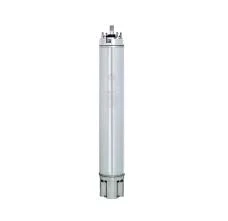Nov . 30, 2024 00:03 Back to list
High-Quality Deep Well Submersible Pumps Available for Purchase Now
Deep Well Submersible Pump for Sale A Comprehensive Guide
In the world of water extraction, deep well submersible pumps have gained popularity due to their efficiency and effectiveness in pulling water from deep underground sources. Whether for agricultural, municipal, or residential use, these pumps play a crucial role in ensuring a reliable water supply. If you're considering investing in a deep well submersible pump, it’s important to understand the various components, features, and factors to consider to make an informed purchase.
What is a Deep Well Submersible Pump?
A deep well submersible pump is a type of pump that is designed to be submerged in water. It consists of a water-tight motor and pump assembly that is installed below the ground, typically in a well. These pumps are capable of lifting water from depths that surpass the reach of conventional pumps. Unlike jet pumps, which can only lift water from shallow depths, submersible pumps can efficiently bring water up from depths ranging from 100 feet to over 1,000 feet.
Key Features of Deep Well Submersible Pumps
1. Construction These pumps are usually made of durable materials like stainless steel or thermoplastic, which can withstand corrosion and difficult environmental conditions.
2. Multi-stage Design Many submersible pumps utilize a multi-stage design that consists of multiple impellers. This allows the pump to generate greater pressure and deliver water more efficiently over long distances.
3. Motor Variability Deep well submersible pumps are available in various motor sizes, typically ranging from half a horsepower up to several horsepower, depending on the demand of the application.
4. Self-Priming Once submerged, these pumps do not need to be primed before operation, which simplifies installation and reduces maintenance needs.
deep well submersible pump for sale

Factors to Consider When Purchasing
1. Depth of Well Understanding the depth of your well is crucial. Pumps are rated for specific depths, and selecting one that aligns with your well’s depth will ensure optimal performance.
2. Flow Rate Determine how much water you need per minute. This will help you select a pump that can deliver the necessary flow rate to meet your needs—ranging from residential to industrial levels.
3. Well Diameter Make sure to measure the diameter of your well. Some submersible pumps are only designed to fit in wells of a certain width, so compatibility is essential.
4. Power Source Consider how the pump will be powered. While many run on electricity, some models might be available with gas or solar power options, which can be beneficial in remote areas.
5. Brand Reputation Research various manufacturers to find pumps that are known for reliability and quality. Reading reviews and seeking recommendations can also guide you in the right direction.
Conclusion
A deep well submersible pump is an essential investment for anyone relying on groundwater. With numerous options available for sale, it’s vital to take your time to choose the right model. Assess your specific needs, consult with experts, and consider the operational environment to find the perfect pump that will provide a reliable water supply for years to come. By choosing wisely, you can enjoy the benefits of uninterrupted access to water, ultimately supporting your agricultural endeavors, household needs, or commercial operations.
-
Submersible Water Pump: The Efficient 'Power Pioneer' of the Underwater World
NewsJul.01,2025
-
Submersible Pond Pump: The Hidden Guardian of Water Landscape Ecology
NewsJul.01,2025
-
Stainless Well Pump: A Reliable and Durable Pumping Main Force
NewsJul.01,2025
-
Stainless Steel Submersible Pump: An Efficient and Versatile Tool for Underwater Operations
NewsJul.01,2025
-
Deep Well Submersible Pump: An Efficient 'Sucker' of Groundwater Sources
NewsJul.01,2025
-
Deep Water Well Pump: An Efficient 'Sucker' of Groundwater Sources
NewsJul.01,2025
-
 Submersible Water Pump: The Efficient 'Power Pioneer' of the Underwater WorldIn the field of hydraulic equipment, the Submersible Water Pump has become the core equipment for underwater operations and water resource transportation due to its unique design and excellent performance.Detail
Submersible Water Pump: The Efficient 'Power Pioneer' of the Underwater WorldIn the field of hydraulic equipment, the Submersible Water Pump has become the core equipment for underwater operations and water resource transportation due to its unique design and excellent performance.Detail -
 Submersible Pond Pump: The Hidden Guardian of Water Landscape EcologyIn courtyard landscapes, ecological ponds, and even small-scale water conservancy projects, there is a silent yet indispensable equipment - the Submersible Pond Pump.Detail
Submersible Pond Pump: The Hidden Guardian of Water Landscape EcologyIn courtyard landscapes, ecological ponds, and even small-scale water conservancy projects, there is a silent yet indispensable equipment - the Submersible Pond Pump.Detail -
 Stainless Well Pump: A Reliable and Durable Pumping Main ForceIn the field of water resource transportation, Stainless Well Pump has become the core equipment for various pumping scenarios with its excellent performance and reliable quality.Detail
Stainless Well Pump: A Reliable and Durable Pumping Main ForceIn the field of water resource transportation, Stainless Well Pump has become the core equipment for various pumping scenarios with its excellent performance and reliable quality.Detail
